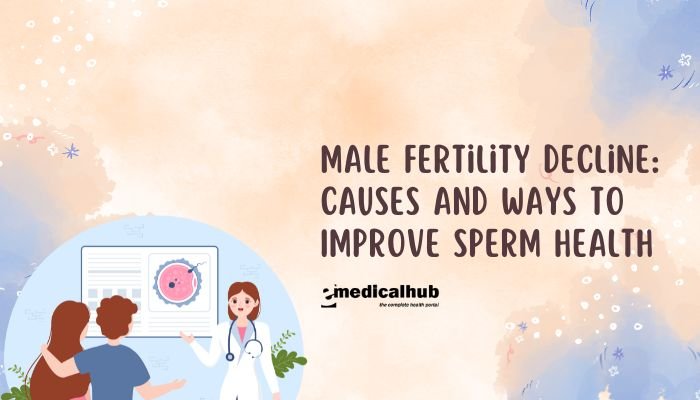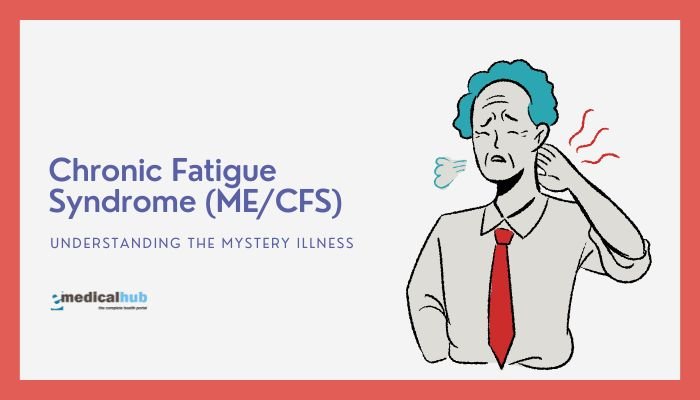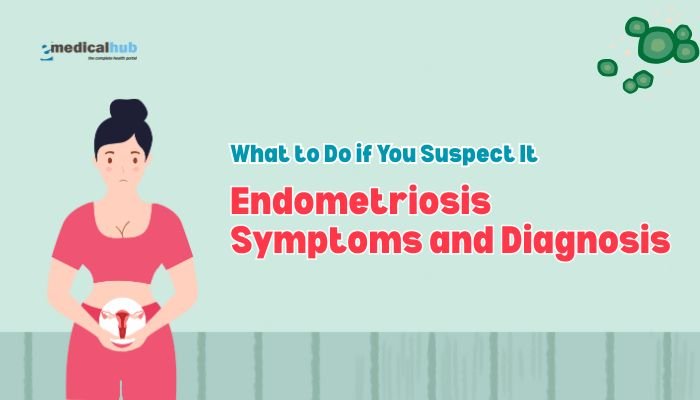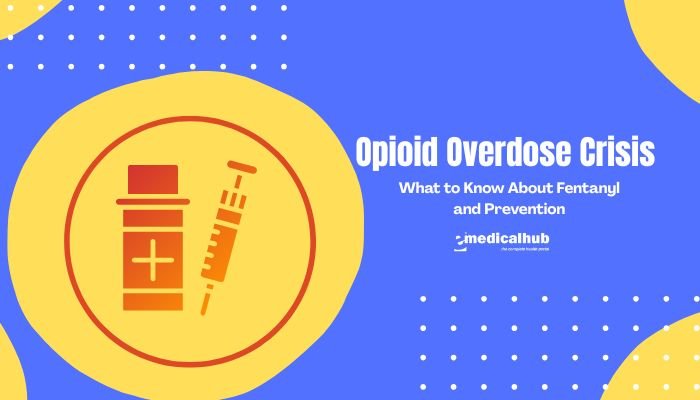Introduction
Male fertility is a cornerstone of reproductive success. However, in recent decades, evidence suggests a decline in sperm quantity and quality across many regions worldwide. Factors such as lifestyle changes, environmental exposures, and underlying medical conditions can compromise sperm health.
While male fertility rests on many factors – from hormone levels to testicular function – paying attention to diet, exercise, stress, and potential toxins can yield tangible benefits.
This article delves into the possible causes of male fertility decline, the biology of sperm production, and evidence-backed strategies to improve sperm quality. By adopting a holistic approach that includes healthy habits and targeted interventions, men seeking fatherhood can bolster their reproductive potential and contribute to healthier pregnancies and offspring.
Understanding Male Fertility and Sperm Production
The Basics of Spermatogenesis
- Location: Sperm are produced in the testes, within the seminiferous tubules.
- Duration: A cycle of spermatogenesis (from stem cell to mature sperm) typically spans ~64 to 72 days.
- Hormonal Control: The hypothalamic-pituitary-gonadal (HPG) axis governs sperm creation; luteinizing hormone (LH) stimulates testosterone secretion, while follicle-stimulating hormone (FSH) supports sperm maturation.
- Maturation: After formation, sperm move into the epididymis, where they gain motility and the ability to fertilize an egg.
Key Sperm Parameters
- Concentration: Number of sperm per milliliter of semen.
- Motility: The percentage of sperm that move effectively.
- Morphology: The shape and structure of sperm (head, midpiece, tail).
- Volume: Total volume of ejaculate.
These factors, along with functional aspects like sperm DNA integrity, cumulatively determine a man’s fertility potential. The World Health Organization (WHO) provides reference ranges for each parameter, though men with values below or near these cutoffs may face difficulties conceiving.
Trends in Decline
- Global Reports: Multiple meta-analyses indicate a drop in average sperm counts among men globally, with some data spanning from the 1970s to the present day.
- Multifactorial Causes: Researchers hypothesize environmental toxins, modern lifestyles, stress, and possible endocrine disruptors as key contributors, though no single culprit fully explains the phenomenon.
Key Point: With male fertility intimately tied to sperm quality, even subtle changes in environment and health can profoundly impact reproductive outcomes.
Causes of Male Fertility Decline
Lifestyle Factors
Obesity and Poor Nutrition
- Excess Weight: Adipose tissue can produce hormones (e.g., leptin) and inflammatory cytokines, leading to decreased testosterone and disrupted spermatogenesis.
- Dietary Imbalance: Diets high in processed carbohydrates, sugar, and trans fats may worsen insulin resistance and oxidative stress in testicular tissue.
- Nutrient Deficiencies: Insufficient antioxidants (e.g., vitamin C, E, selenium, zinc) can expose sperm to oxidative damage.
Sedentary Habits
- Lack of Exercise: Associated with suboptimal metabolic health, higher stress hormone levels, and reduced testosterone.
- Excessive Exercise: Conversely, overtraining or endurance sports can raise scrotal temperatures and hamper T levels if done without balance.
Tobacco and Alcohol Use
- Smoking: Introduces toxins that damage DNA in sperm, hamper motility, and reduce overall sperm count.
- Alcohol Misuse: Chronic intake can suppress gonadotropin release, damage testicular cells, and create hormonal imbalances.
Recreational Drugs
- Marijuana: Some data suggest lowered sperm count, motility changes, or hormone disruptions.
- Anabolic Steroids: Suppress endogenous testosterone production via negative feedback, often resulting in testicular atrophy.
Environmental and Occupational Exposures
Endocrine Disruptors
- Plasticizers (Phthalates, BPA): Found in certain plastics and receipts, can mimic or block hormone functions.
- Pesticides and Industrial Chemicals: Linked to reduced sperm quality and endocrine changes in agricultural or industrial work settings.
Heavy Metals
- Lead, Mercury, Cadmium: Accumulate in the body, harming testicular function. Chronic exposure can degrade sperm count and motility.
Heat Stress
- High Temperatures: Sperm production requires a temperature a few degrees below core body temperature. Frequent sauna use, tight underwear, or prolonged laptop use on the lap can raise scrotal temperature, affecting sperm.
Health Conditions and Medical Factors
Hormonal Imbalances
- Hypogonadism: Low testosterone due to pituitary or testicular dysfunction directly impairs spermatogenesis.
- Thyroid Disorders: Both hyper- and hypothyroidism can disrupt the normal hormonal milieu needed for sperm production.
Varicocele
- Enlarged Veins in Scrotum: Impairs circulation, raises local temperature, lowers sperm parameters. A common reversible cause of male infertility.
Infections
- STIs (e.g., chlamydia, gonorrhea): Can cause scarring or inflammation in reproductive tracts.
- Systemic Viruses: Mumps orchitis can result in permanent testicular damage if it occurs post-puberty.
Age and Late Fatherhood
- Sperm Mutations: Age can gradually accumulate DNA damage in sperm.
- Reduced Volume: Lower volume and motility typically appear with older paternal age, though the effect is subtler than with female fertility.
Stress and Emotional Factors
- Psychological Stress: Chronically elevated cortisol may disrupt the HPG axis, lowering testosterone and sperm count.
- Sleep Deprivation: Affects hormone rhythms, possibly impacting nighttime testosterone surges and sperm regulation.
Identifying Low Sperm Health
Semen Analysis
- Standard Test: Men suspecting fertility issues usually undergo a semen analysis to measure concentration, motility, morphology, volume, and pH.
- WHO Criteria: As of the 2010 revision, reference levels for normal fertility potential include:
- Concentration: ≥15×106\geq 15 \times 10^6/mL
- Motility: ≥40%\geq 40\% (progressive + non-progressive)
- Morphology: ≥4%\geq 4\% normal forms
- Volume: ≥1.5\geq 1.5 mL
- pH: ≥7.2\geq 7.2
- Repeat Testing: Due to daily variations, 2–3 analyses spaced weeks apart are recommended for an accurate picture
Additional Diagnostics
- Hormone Profile: FSH, LH, testosterone, and prolactin can reveal endocrine imbalances.
- Scrotal Ultrasound: Detects varicoceles, structural anomalies, or masses.
- Genetic Testing: If severe oligospermia or azoospermia is present, checking for chromosomal abnormalities (e.g., Klinefelter syndrome) might be needed.
- Sperm DNA Fragmentation: Some advanced labs examine genetic integrity, relevant if recurrent IVF/ICSI failures happen.
Strategies to Improve Sperm Health
Lifestyle Modifications
Diet and Nutrition
- Antioxidant-Rich Foods: Berries, leafy greens, nuts, seeds help counter oxidative stress on sperm.
- Essential Minerals: Zinc, selenium found in seafood, meats, and cereals; crucial for testosterone synthesis and sperm integrity.
- Healthy Fats: Omega-3 fatty acids from fish, walnuts, flax seeds can bolster sperm membrane fluidity.
Weight Management
- Achieve Healthy BMI: Overweight or obese men often show decreased sperm quality. Even moderate weight loss can raise testosterone and sperm parameters.
- Stable Approach: Avoid crash diets that might reduce nutrient intake or cause hormone fluctuations.
Exercise Regimen
- Regular Moderate Exercise: Increases insulin sensitivity, controls weight, and can improve hormone balance.
- Resistance Training: Might aid testosterone levels when done in moderation. Overtraining, however, can be counterproductive.
- Avoid Overheat: Minimizing scrotal heating from tight garments or hot tubs can help preserve sperm integrity.
Environmental Adjustments
- Minimize Exposure: Use safer household products with fewer chemicals, reduce direct contact with pesticides or industrial toxins if possible.
- Use BPA-Free Items: Where feasible, choose glass or stainless steel food containers, as plastic chemicals can leach.
- Optimize Sleep Environment: Good ventilation, stable temperature for healthy circadian rhythms.
Reduce Substance Use
- Quit Smoking: Eliminates many toxins that degrade sperm DNA, hamper motility, and lower count.
- Moderate Alcohol: Limit daily or weekly intake to recommended guidelines (no more than 1–2 drinks/day).
- Avoid Illicit Drugs: Anabolic steroids, marijuana, opioids can hamper fertility significantly.
Stress Management
- Psychological and Physical Stress: Chronic anxiety or intense workloads elevate cortisol, which can negatively impact sperm generation.
- Relaxation Techniques: Meditation, yoga, or progressive muscle relaxation.
- Seek Counseling: If mental health challenges persist, professional help fosters emotional stability and, indirectly, better fertility outcomes.
Supplements and Nutrients for Sperm Health
Commonly Recommended Supplements
Zinc
- Role: Key for testosterone production and normal testicular function.
- Sources: Meats, shellfish, fortified cereals.
- Supplementation: Possibly beneficial if deficiency is suspected. Over-supplementation can cause side effects.
Selenium
- Antioxidant: Protects sperm from oxidative damage, involved in spermatogenesis.
- Diet Sources: Brazil nuts, fish, eggs.
- Excess: Too much selenium can be toxic. Controlled intake is best.
Coenzyme Q10 (CoQ10)
- Mechanism: A potent antioxidant supporting mitochondrial function, which is essential for sperm motility.
- Studies: Some show improved sperm count/motility with supplementation, though results vary.
L-Carnitine
- Energy for Sperm: Assists in fatty acid transport into mitochondria, potentially boosting sperm vitality.
- Research: Some meta-analyses indicate improvements in sperm count, motility, and morphology in men with fertility issues.
Vitamin E and C
- Oxidative Stress Reduction: Combining these vitamins can protect sperm membrane from free radical damage.
- Balance: High doses need caution to avoid negative interactions or overconsumption.
Herbal Extracts
Ashwagandha
- Potential: May elevate testosterone and sperm quality by reducing stress hormones.
- Evidence: Some small studies suggest mild improvements in sperm parameters.
Tribulus Terrestris
- Usage: Traditional herb for libido, though robust data on its effect on sperm quality remain limited.
- Caution: Some research contests actual T-boosting claims.
Safety and Efficacy
- Consult Healthcare Providers: Especially for dosage and synergy with existing conditions.
- Quality Control: Choose supplements with third-party testing to avoid contamination or mislabeling.
Medical Interventions for Low Sperm Count
Addressing Varicocele or Structural Issues
- Varicocele Repair: Surgical correction can significantly improve sperm production and motility in selected men.
- Obstruction Relief: If blockages in the epididymis or vas deferens are found, microsurgical fixes can restore sperm flow.
Hormonal Therapies
- Gonadotropins: Men with hypogonadotropic hypogonadism might benefit from FSH + LH injections to stimulate testicular function.
- Anti-Estrogens (Clomiphene): Encourages the body’s own LH/FSH secretion, raising testosterone and sperm output in certain men.
- Aromatase Inhibitors: Used if elevated estrogen levels are suspected to suppress T production.
Assisted Reproductive Technologies (ART)
- IUI (Intrauterine Insemination): Sperm is concentrated and placed directly into the uterus at ovulation.
- IVF/ICSI: In vitro fertilization with intracytoplasmic sperm injection for severe male factor infertility. Even very low counts can succeed with ICSI.
- Success Rates: Dependent on female partner’s fertility status and the severity of male factor issues.
Additional Treatments
- Antibiotics: If an infection is compromising fertility, appropriate antibiotics can restore normal sperm function.
- Testosterone Replacement: Usually not indicated if fertility is desired because exogenous T suppresses spermatogenesis. Instead, fertility-friendly hormone therapies are used.
Putting It All Together: A Holistic Approach
Comprehensive Assessment
- Medical Checkup: Evaluate hormones, rule out varicocele or testicular issues, measure sperm parameters.
- Lifestyle Audit: Body weight, diet, habits, stress, environmental toxins.
- Possible Supplementation: Address documented deficiencies (like vitamin D or zinc).
Practical Steps for the Average Man with Mild Issues
- Diet Overhaul: More vegetables, fruits, lean protein, and whole grains. Limit junk food.
- Exercise Routine: At least 150 minutes/week moderate activity plus 2–3 strength sessions.
- Stress Minimization: Adequate sleep (7–8 hours) and stress-relief hobbies.
- Consider a Basic Multivitamin: Possibly with additional antioxidants if recommended.
- Regular Check-Ins: Possibly 2–3 months after changes, retest semen parameters. Sperm turnover cycle ~72 days means improvements might appear after 3 months.
Collaboration with Health Professionals
- Urologists or Fertility Specialists: For advanced testing or interventions (ART if needed).
- Nutritionists: Personalized meal plans ensuring essential micronutrients for reproductive health.
- Endocrinologists: If hormonal disorders or borderline testosterone levels are identified.
Long-Term Maintenance and Monitoring
Reevaluation of Risk Factors
- Life Changes: Weight fluctuations, new job exposures, or new supplements might require adjusting fertility measures.
- Aging: Though men can father children at older ages, sperm quality can wane, so ongoing healthy living is crucial.
Realistic Expectations
- Gradual Gains: Sperm count or morphology improvements often take months. Quick fixes seldom exist.
- Continuous Healthy Habits: Sustain dietary and lifestyle improvements even after achieving a pregnancy goal for better overall health and future conceptions.
Mindful of Relapses
- Avoid Complacency: If improvements occur and then you revert to old habits (heavy smoking, poor diet), gains in sperm health may fade.
- Stay Informed: Keep track of new research on male fertility, as ongoing studies may offer refined strategies or novel interventions.
Conclusion
Male fertility decline can stem from a variety of causes—ranging from lifestyle and environmental factors to underlying health conditions. Yet many men can significantly improve sperm count, motility, and morphology through systematic changes in diet, exercise, stress management, and careful supplementation. While marketing claims for testosterone boosters or “magic pills” often overshoot real possibilities, legitimate approaches such as maintaining a healthy weight, cutting out smoking, and limiting chemical exposures hold strong, evidence-based potential.
Semen analysis remains a foundational diagnostic step to gauge fertility status, ensuring targeted interventions if needed—like varicocele repair or specialized hormonal therapy. Consulting professionals (urologists, endocrinologists, or fertility experts) can fine-tune strategies, especially for those dealing with subclinical or severe issues. Ultimately, fostering optimal sperm health is more than a short-term fix; it’s part of an integrative lifestyle that supports overall wellness, potentially enhancing both reproductive success and longevity.
References
- Levine H, Jørgensen N, Martino-Andrade A, et al. Temporal trends in sperm count: a systematic review and meta-regression analysis. Hum Reprod Update. 2017;23(6):646-659.
- World Health Organization. WHO Laboratory Manual for the Examination and Processing of Human Semen, 5th ed. Geneva: WHO; 2010.
- Liu Z, Foong S, Suresh S, Tummon I, Cheung AP. Effectiveness of antioxidant therapy in improving semen parameters: a systematic review and meta-analysis of randomized controlled trials. Fertil Steril. 2021;115(1):61-72.
- Jungwirth A, Diemer T, Kopa Z, et al. EAU Guidelines on Male Infertility. Eur Urol. 2020;78(2):145-157.
- Schisterman EF, Mumford SL, Browne RW. Lipidomics in the study of epidemiology of fertility. Reproduction. 2016;151(6):R59-70.
- Daniell HW. Osteoporosis of the slender smoker. Arch Intern Med. 1976;136(3):298-304.
- Guzick DS, Overstreet JW, Factor-Litvak P, et al. Sperm morphology, motility, and concentration in fertile and infertile men. N Engl J Med. 2001;345(19):1388-1393.
- Kashan ZF, Rajaei F, Alizadeh K. The effect of L-carnitine supplementation on male fertility: a systematic review. Andrologia. 2020;52(11):e13873.
- Ko EY, Sabanegh ES Jr. Mechanisms of action of varicocele in male infertility. Hum Reprod Update. 2011;17(2):178-188.
- Skakkebæk NE, Rajpert-De Meyts E, Main KM. Testicular dysgenesis syndrome: an increasingly common developmental disorder with environmental aspects. Hum Reprod. 2001;16(5):972-978.
- Cocuzza M, Sikka SC, Athayde KS, Agarwal A. Clinical relevance of oxidative stress and sperm chromatin damage in male infertility: an evidence-based analysis. Int Braz J Urol. 2007;33(5):603-621.
- Tournaye H, Cohlen B, et al. Management of male infertility. ESHRE Guideline. 2017.
- Practice Committee of the American Society for Reproductive Medicine. Advanced sperm preparation or testing for DNA fragmentation: are they useful? Fertil Steril. 2019;112(6):1154-1159.
- Agarwal A, Durairajanayagam D. Are men talking their reproductive health for granted? The hidden risk factors for male infertility. Reprod Biomed Online. 2018;36(1):3-5.





